Football trips Lazio Roma
Book your football trip to Lazio Roma easily in four clicks
Book your complete football trip to Lazio Roma. Choose which match, hotel & seat all in one place. No booking fees.
Enjoy top-class Italian football at the historic Stadio Olimpico in Rome during a Lazio Roma match. The fanatical fans in the Curva Nord will be in their seats for 90 minutes, creating a great atmosphere.
As there are plans to demolish the Stadio Olimpico and replace it with a more compact stadium, now is the time to visit this historic building. Apart from the 1960 Olympics, two European Championship finals, one World Cup final and four Champions League finals were held there. Since November 2021, it is finally possible to visit the stadium from the inside by taking a stadium tour. Including a visit to the brand-new Lazio club museum.
Besides seeing a match, you will have plenty of opportunities to see the many highlights of the world city of Rome. The Colosseum, the Trevi Fountain, the many museums, and luxury shopping streets: the choice is yours to make the most of this great trip!
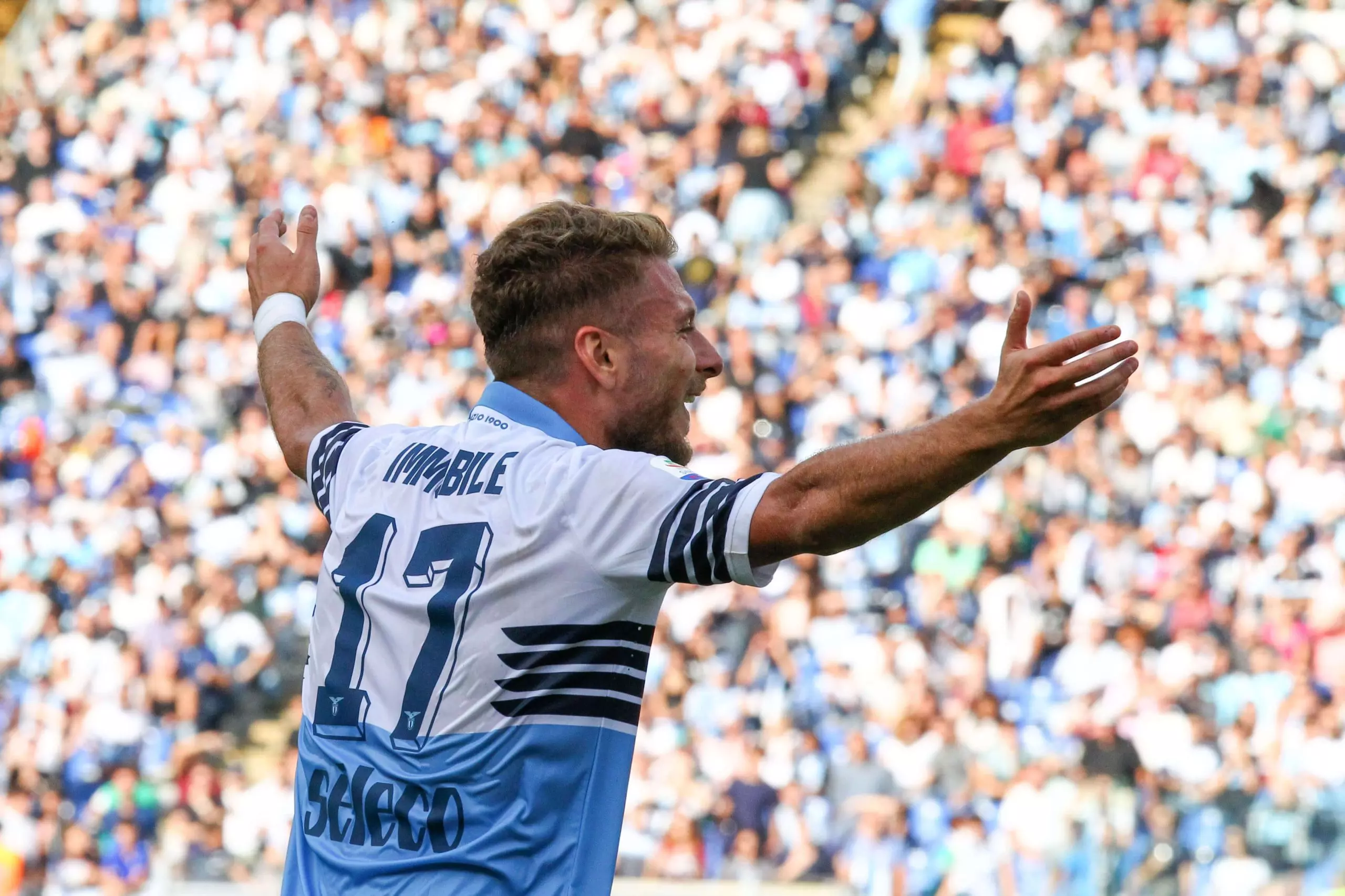
Everything you need to know for your football trip to Lazio Roma
We have picked out the best tips to make sure you get the most out of your football trip to Lazio Roma. From practical information around the Stadio Olimpico to suggestions for exploring Rome.
- Stadio Olimpico information, itinerary & tips
- Information about Lazio Roma
- What to do in Rome
Lazio stadium: Stadio Olimpico
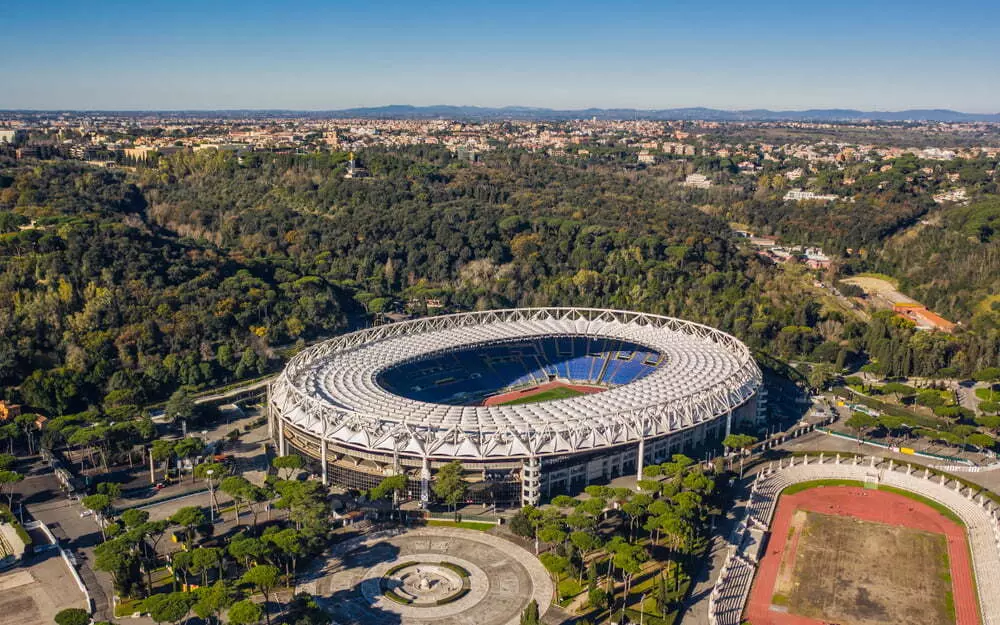
Lazio shares the Stadio Olimpico (or Rome Olympic Stadium) with AS Roma. The stadium was built in 1927 by order of the fascist dictator Benito Mussolini. It was named Stadio del Cipressi and opened in 1932.
In 1936, Mussolini was deeply impressed by the Olympic Games in Berlin. The Games were to come to Rome in 1940 and astonish the world with the supremacy of the Italian state. The stadium was rebuilt and expanded and renamed Stadio Olimpico. However, the whole plan came to nothing: the outbreak of war meant that the Games were never held. The stadium was even severely damaged during the war years. In 1953, it was renovated, and afterwards, both S.S. Lazio and AS Roma moved to the stadium for their league matches.
In 1960, Rome was awarded the Olympic Games after all, and the name of the stadium was permanently changed to Stadio Olimpico. During the 1968 and 1980 European Championships, various matches were played in the stadium, including the finals. At the 1990 World Cup, West Germany became world champions in the stadium after defeating Argentina 1-0.
Currently, the stadium has 70,634 seats. How long the stadium will remain in its current form is unclear. For years, there has been talk of a new stadium under the name Stadio della Roma, with 52,000 seats. After nine years of preparation, AS Roma decided to abandon the plans in 2021. Nevertheless, it is still the intention to build a new stadium at the same location, which should be more modern, environmentally friendly and sustainable than the current Stadio Olimpico. If you still want to see a match in the old Stadio Olimpico, you should do so soon.
How to Reach the Stadio Olimpico
The Rome Olympic Stadium is about six kilometres from the centre, with excellent public transport links. From the Vatican, it is about a 30–45-minute walk.
By Metro
The underground system of Rome has three lines: A, B and C. The underground system is not nearly as extensive as that of, say, London or Paris. The problem is that in expanding it, one keeps coming across archaeological finds, which constantly delays the excavation work. A fourth line has been planned for years. Still, a combination of metro and bus/tram is the best way to get to the Stadio Olimpico. There are various possibilities to reach the stadium:
- Take Metro A (the red line) and get off at the Ottaviano-San Piedro stop.
Then take bus 32 and get off at the Piazzale della Farnesini stop. From there, it is a 100-metre walk to the stadium.
- Take Metro A (red line) and get off at Flaminio. Take tram 2 and get off at Piazza Mancini, across the Tiber from the Olympic Stadium.
- Take Metro A (red line) and get off at Lepanto stop (between Ottaviano-San Pietro and Flaminio). Then take bus 280 to the stadium.
- If you are on Metro B (blue line), get off at Termini. Change there to line A (red line).
Address details Stadio Olimpico
Via Foro Italico
00194 Rome
By Train
There are three train stations in Rome you can use to travel to the stadium:
- Termini station: here, you can get on Metro A (red line) towards Battistini.
- Tirburtina station: take Metro B (blue line) here and get off at Termini. Here you can change to line A (red line).
- Ostiense station: take metro B at ‘Pyramid Rome’ station towards Rebibbia and get off at Termini. Here you can change to line A (red line). See further instructions above.
Map of the Stadium
The sides of the stadium are:
- Tribuna Monte Mario. This is the main grandstand, with around 14,000 of the most expensive seats. You can also choose between ‘Centrale’ and the ‘Lato Nord’ and ‘Lato Sud’. The last two are a bit cheaper.
- Tribuna Tevere. The best view of the pitch is offered by this grandstand. You have the Tribuna Tevere (cheaper) and Monte Mario (more expensive tickets). Near the centre line, you have a good view of the whole stadium.
- Curva Nord. The seats behind the goal on the north side of the stadium. Exactly behind the goal are the most fanatic fans. There are seats in this section, but everyone is standing and waving flags. Those who remain seated see little of the match. In the sections left and right of the Curva Nord, you have the sections Nord Est (Northeast) and Nord Ovest (Northwest). These sections also have a great atmosphere and are a bit more relaxed than the Curva Nord itself.
- Curva Sud. The stand behind the goal on the south side. During AS Roma’s home matches, the Curva Sud is populated by fanatical fans. On both sides of the Curva Sud, you will find the Ovest and Est sections. At Lazio matches, the opposing fans stand in the Curva Sud Ovest.
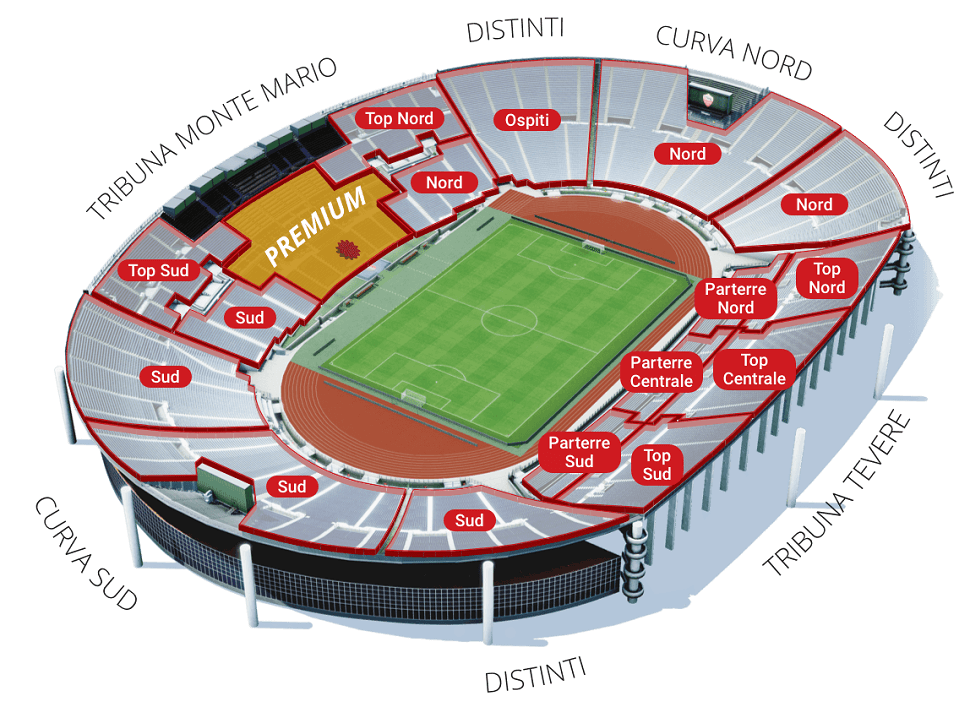
Stadium Tour and Museum
Until recently, it was impossible to visit the Olympic Stadium. As of 11 November 2021, this has changed. On this day, the SS Lazio Museum, under the main stand of the Stadio Olimpico, opened its doors to the public. In this brand-new museum, you can follow the history of the club and find all the prizes won and unique shirts of the club’s legends. Included is a visit to the dressing rooms, trainer’s room, massage room, the showers and the pitch. The Olympic Stadium and Forza Lazio Museum are open daily from 10.00 to 18.00. The price is €15.
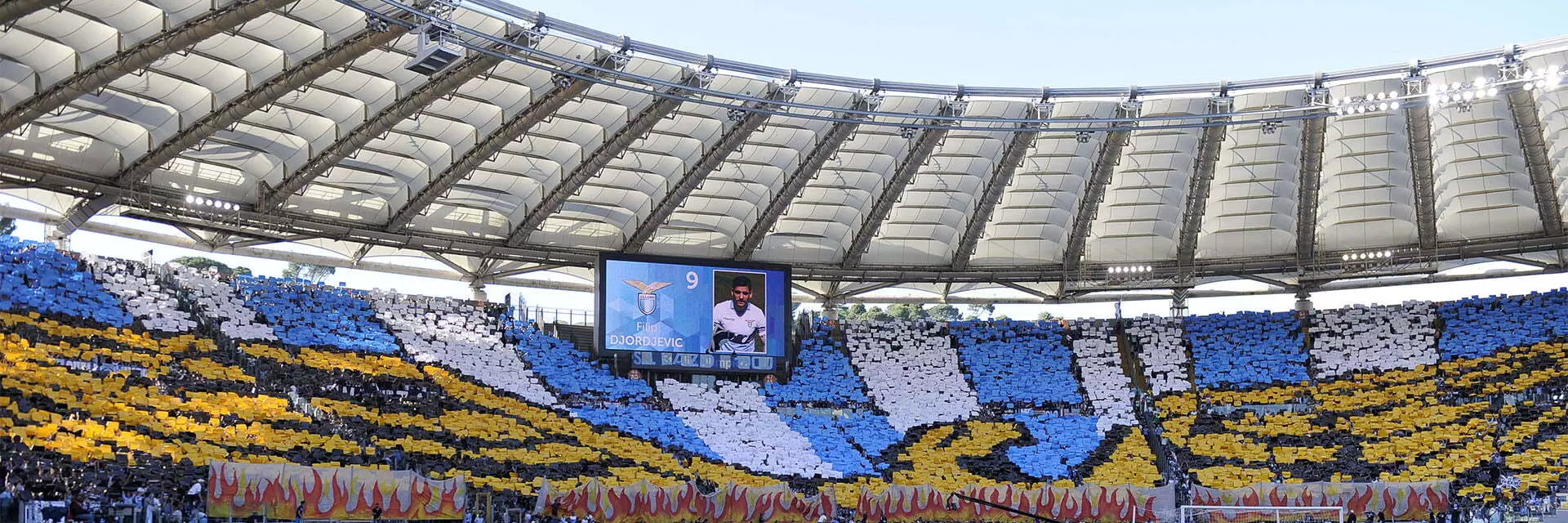
Snacks and Drinks Near the Stadium
Before and after the match, Lazio supporters gather around the Ponte Milvio, an ancient Roman bridge over the Tiber River, about a kilometre east of the Stadio Olimpico. The streets around the bridge are lined with dozens of restaurants, bars and stalls where fans feast on beer and deep-fried rice balls filled with mozzarella and beef ragout.
But also in other parts of the city, you will find some real Lazio pubs and restaurants, covered from top to bottom with football memorabilia. Don’t forget to stop by the following places for a unique and tasty experience.
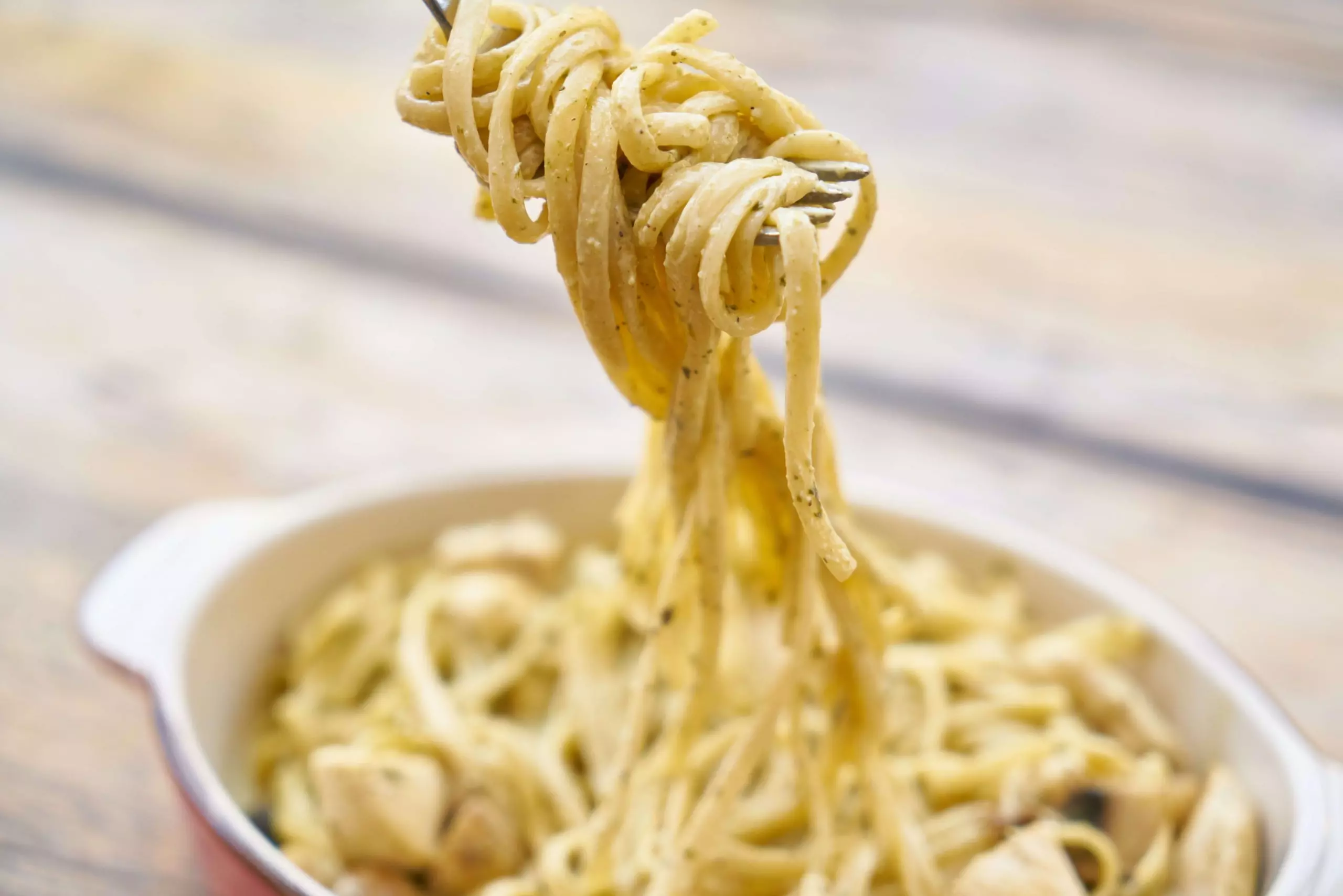
Al Grottino del Laziale
At Vila Romania 27, about ten minutes from Villa Borghese, lies this typical Lazio pub.
The owner is a fanatical I Bianceceolesti fan who has hung the walls with the history of his favourite club. It is also a very characteristic little Roman restaurant with an excellent cuisine. According to many visitors, it offers the best pasta in Rome. It can be reached on foot from the centre of the city. Buses 52, 63 and 360 stop right outside the door.
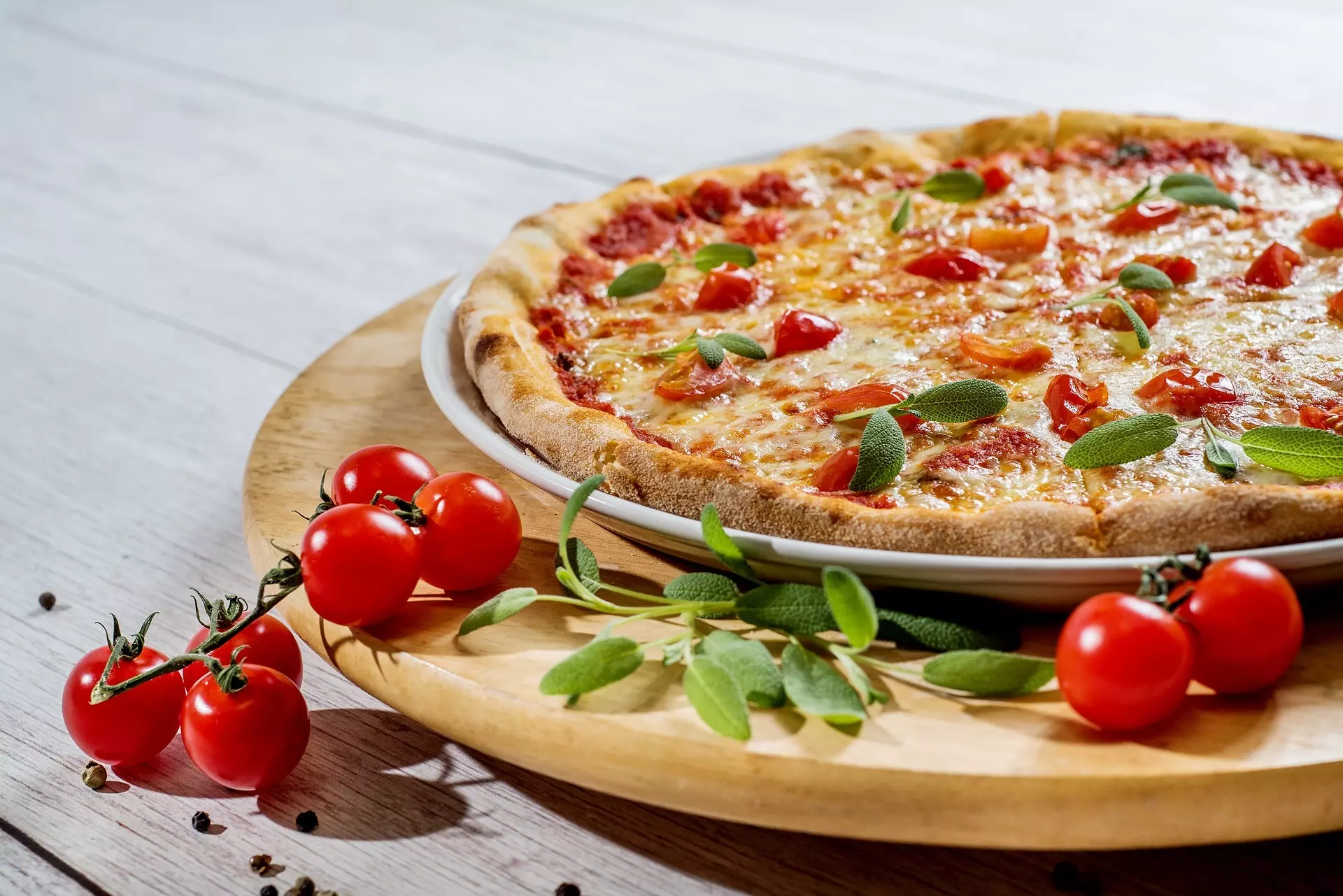
L’Osteria di Birra del Borgo Roma
About a kilometre north of Vatican City, near Ottaviano metro station, is this famous restaurant and brewery, where many Lazio fans come to eat before the match.
But it is not only the tifosi who love this place. People come from far and wide for the much-prized home-brewed beers. The waitresses are happy to let you taste some of the beers and explain the ingredients and the brewing process. The dishes are also of very high quality; the pizza, for example, has won several awards. You’ll find the restaurant at Via Silla 26; opening hours are daily (except Mondays) from 18.00 to 01.00 (on weekends also from 12.00 to 15.00).
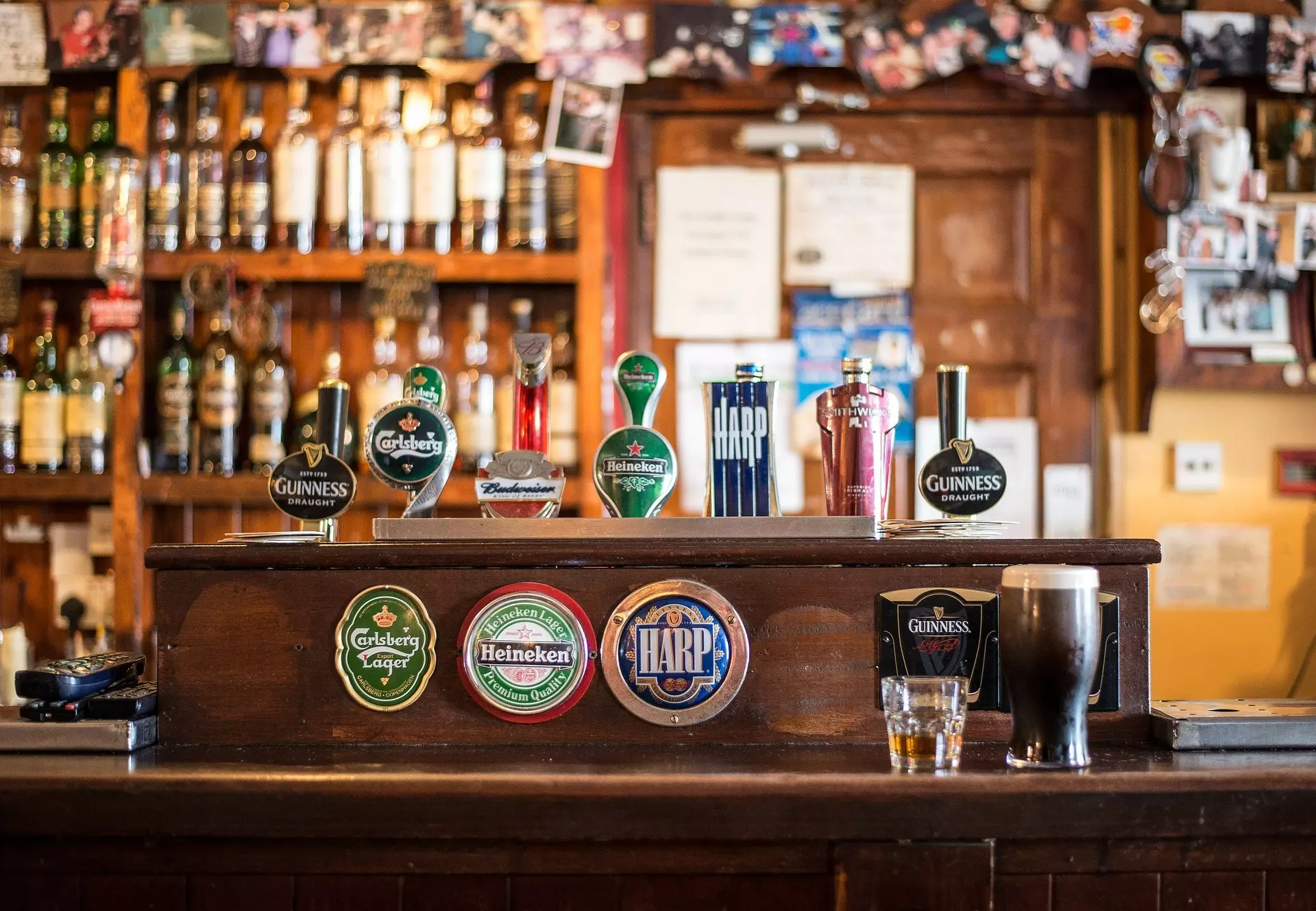
Excalibur Pub
The Excalibur Pub (Piazza Vescovio 4) is located in the Trieste district, about five kilometres north of the city centre. It is a Scottish-style pub, but run by a real Lazio family and very popular with fanatical supporters. The walls are hung with scarves, banners and shirts, mostly from Lazio and friendly clubs like Inter and West Ham. At the entrance, there is a mural of Gabriele Sandri, a Lazio fan who died from a police bullet, and where flowers are still laid.
The kitchen offers typical pub food, such as homemade burgers, tapas or sauerkraut with sausage. There is a wide choice of beers and live football can be enjoyed on several screens. Excalibur is open Monday to Friday from 12.30 to 02.00 and on Saturday from 18.00 to 02.00. From Libia metro station (Line B), it is a ten-minute walk. Buses 63, 310 and 351 stop nearby, in Piazza Vescovio.
Information about Lazio
Societá Sportiva Lazio was founded in 1900 as a multi-sport club. It was one of four clubs in the capital. Later, in 1927, the ruling Fascist Party forced the four clubs to merge into one new association, in order to arm themselves against the domination of the football clubs from northern Italy. Three clubs eventually merged into the new AS Roma; Lazio was the only one to retain its independence. However, the joining of forces had little success; the northern Italians remained dominant. Whereas Juventus has already won 36 titles, AS Roma has only won three so far.
In 1958, Lazio won its first prize, the National Cup. In 1974, the first national title was won. After that came lean years, and in 1980 and 1985 the club even relegated to the second level. The second half of the 1990s saw the most successful period under coach Sven-Göran Eriksson. Between 1998 and 2000, the club won a flood of prizes: two national cups, one national title, two Italian Supercups, the European Cup Winner’s Cup and the European Super Cup. In 2000, top players such as Nedved, Simeone, Manzini and Inzaghi won both the national title, the cup and the Supercup. In recent years, Lazio has been at the top of the A Series. In 2020, it competed for the top places until the last day and qualified for the Champions League.
Archrival is, of course, city partner AS Roma. The Lazio – AS Roma derby is known as the Derby Della Capitale, and is one of the most charged duels in the Italian league. Both clubs come from different areas of Rome. Lazio draws its fans from the north of the city, especially from the prosperous Prati district. Therefore, the club was also seen as a club for the bourgeoisie. AS Roma drew its fans mainly from the Testaccio area, a poor working-class district. Other rivals of Lazio include Pescara, Livorno and Atalanta Bergamo.
The logo of Lazio
Lazio’s logo consists of an eagle with a white shield and blue border in its talons. The eagle is the traditional symbol of the club. It stands for power, victory and prosperity. In addition, the bird of prey represents Zeus, the Greek god of the sky and thunder. The animal earned Lazio the nicknames ‘le Aquile’ and ‘Anquilotti’ (the Eagles). Just like Vitesse and Benfica, Lazio’s mascot, the eagle Olimpia, flies around the Olympic Stadium before every match.
In the shield below the name, we find the name of the club, with a smaller three-part shield underneath with the blue and white club colours.
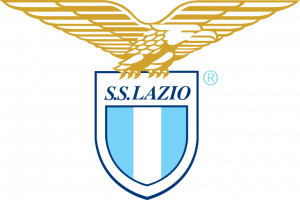
Lazio’s uniform
Lazio plays in sky blue shirts, white trousers and white socks. The club colours have been blue and white since its inception in 1900. Remarkably, these colours are taken from the flag of Greece. This was chosen because Lazio wanted to present itself as an omni-sport club. And what better match for that than the colours of the country of the Olympic Games, where various sports are also practised. The colours gave Lazio its most famous nickname: I Bianceceolesti (‘The white and sky blue’).
What to do in Rome?
What is there not to do in Rome? The historic city centre is on the UNESCO World Heritage list. As the ancient capital of the Roman Empire, it is teeming with historical buildings, churches, fountains, museums and parks. In addition, the city is famous for its shopping and culinary delights. You will have to make a good choice beforehand, because to see all the highlights in this city, you will definitely need to take a week. We have listed some of the city’s classics for you.
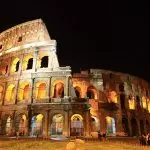
Colosseum
If you are a fan of old stadiums, you should not miss the Colosseum. This arena, chosen in 2007 as one of the seven new wonders of the world, was built in the first century AD. At the time, it was a unique stadium, which even had a ‘retractable roof’. It took more than a thousand men to pull an enormous awning over the stadium to protect the 50,000 spectators from the sun. Visitors could watch the most bizarre spectacles: warriors fighting each other or all sorts of wild animals, and prisoners being fed to the wild animals as an intermission number. All this to the great amusement of the public. Fortunately, such spectacles no longer take place, but you can still visit the Colosseum from the inside. It is open daily from March to September from 9.30 a.m. to 7.15 p.m. In the winter months, the ticket booth closes at 4.30pm. A ticket costs €16, is valid for 24 hours and gives access to the Colosseum and the Roman Forum. It is highly recommended to book in advance on the Coliseum’s website (parcocolosseo.it/) as the queues at the ticket office can be very long. The site also offers guided tours and special evening events.
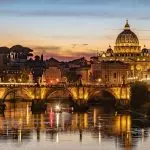
Vaticano
In the heart of Rome lies the dwarf state of Vatican City. It is an independent state, the spiritual centre of the Catholic Church and the residence of the Pope. In the centre is the famous Saint Peter’s Basilica. The sanctuary is free to visit and is open from 07:00 to 19:00. Be sure to come early as the queues can get quite long here too.
The absolute highlight is I Musei Vaticani: a collection of 26 museums in the Vatican’s palaces, with an enormous collection of art treasures. See ancient Roman and Egyptian treasures and works of art by Raphael and Leonardo da Vinci. The biggest crowd-puller is, of course, the Sistine Chapel. In this room, the cardinals come together when a new pope is elected. The ceiling was painted in the 15th century by Michelangelo with ‘The Last Judgement’. The number of visitors per hour is limited, so booking in advance is recommended. The cheapest ticket costs €17, which gives access to all museums. For an additional fee, you can book an audio guide or a guided tour.
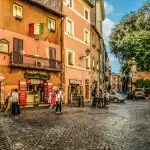
Trastevere
Besides all the culture, Rome also has plenty of photogenic, authentic neighbourhoods. Trastevere, about two kilometres from the centre, is a prime example of such an untouched Italian district. The medieval houses are separated by a maze of narrow streets. Turn a corner, and you will find an attractive square, an old church or a beautiful fountain. Due to its popularity, Trastevere also has many great artisan shops and restaurants. Especially in the evening, when both locals and tourists come here to stroll. From the centre, bus 75 will take you there in 15 minutes.
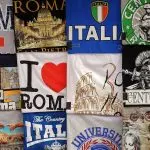
Shopping
Rome is also the place to be if you want to buy a nice souvenir.
You will find both luxury shopping streets and atmospheric markets.
In the shopping streets Via Condotti, Via Borgognona and Via Frattina, you will find the exclusive shops of the Italian top brands. They are not cheap, but you can also just marvel at the windows. Get off at metro station Spagna.
For the ordinary purse, there is also plenty to find. Via del Corso is the best-known shopping street in Rome. It is over one and a half kilometres long and offers a more varied selection.
A lesser-known shopping street for tourists is Via Cola di Rienzo, close to the Vatican City and accessible by bus 81. Here, you will find a wide range of affordable clothing and accessories, as well as renowned bookstores and ice-cream parlours. And don’t forget the Roman markets. The most famous market square is Campo de Fiori, near the Pantheon. In this fresh market you will also find many bakeries, restaurants and wine bars around the square.